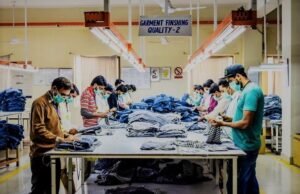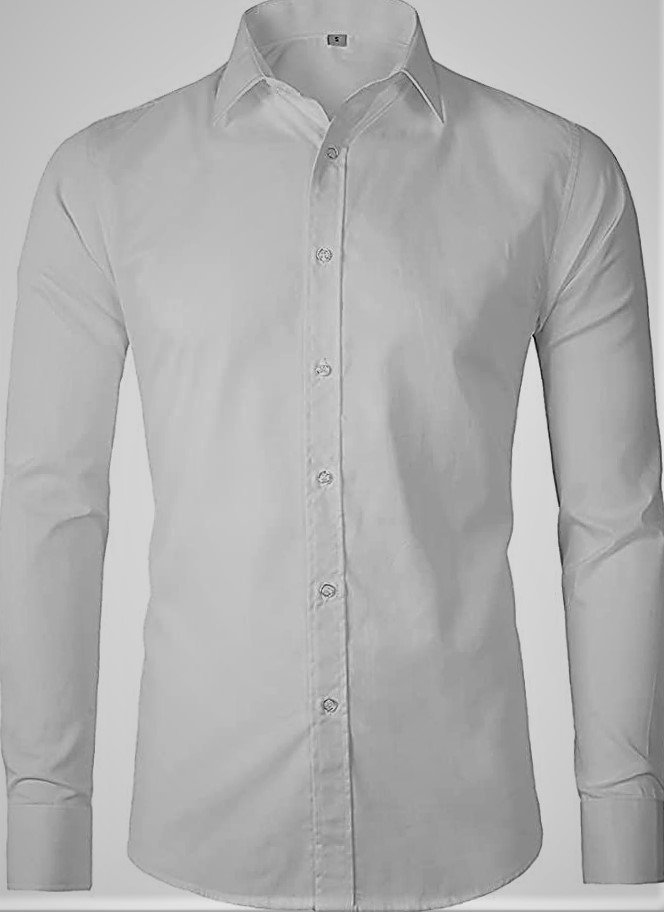Making a shirt is a fastidious interaction that requires accuracy at each stage. Here is an itemized breakdown of the key advances engaged with shirt fabricating:
1. Picking the Texture: The Underpinning of the Shirt
The excursion of a shirt starts with the choice of texture. The sort of texture took advantage of not just powers the vibe and solace of the shirt yet in addition its general look and strength. Famous texture decisions include:
Cotton: Known for its breathability and non-abrasiveness, cotton is quite possibly of the most normally involved texture in shirt-production. It’s agreeable, sturdy, and simple to really focus on, making it ideal for both easygoing and formal shirts.
Material: Lightweight and breathable, cloth is an ideal decision for hotter environments. It’s esteemed for its fresh, new look, however it will in general kink more effectively than different textures.
Polyester Mixes: Frequently utilized for additional reasonable shirts, polyester mixes can offer greater solidness and less wrinkling, however they may not be all around as breathable as regular strands like cotton or cloth.
Silk: For a lavish vibe and finish, silk is some of the time utilized in premium shirts. Its smooth surface and sparkle give it a more modern appearance, making it a well known choice for top of the line formal shirts.
The texture decision directs how the shirt will act in various circumstances, settling on this choice the most basic move toward shirt arrangement.
2. Planning the Shirt: The Outline of Style
When the texture is chosen, the shirt’s plan comes to fruition. Shirt fashioners work intimately with examples to make a special look that mixes feel with usefulness. Here are some key plan components that are considered during the plan stage:
Neckline Style: The neckline is one of the most characterizing elements of a shirt. Famous neckline styles incorporate conservative, spread, and mandarin collars. The neckline adds style as well as impacts the shirt’s custom.
Sleeves: Shirt sleeves come in a few styles, like single sleeves (button sleeves) or French sleeves, which require sleeve buttons. Sleeves assume an imperative part in characterizing the shirt’s look, especially in conventional plans.
Shirt Fit: Shirt fit is vital for the general solace and appearance. You can find different choices like thin fit, customary fit, or loosened up fit. The cut of the shirt influences its general outline, from how it embraces the body to the sleeve length and chest estimation.
Different Subtleties: The architect will likewise decide extra subtleties, like pockets, creases, and the sort of sewing utilized. Every one of these decisions adds character to the shirt, improving its uniqueness.
The plan stage is pivotal for guaranteeing that the shirt lines up with latest things and fulfills both utilitarian and tasteful requirements.
3. Cutting the Texture: Molding the Shirt Pieces
After the shirt configuration is concluded, the texture is cut into the different parts expected to collect the shirt. Talented example creators put the example pieces on huge rolls of texture, guaranteeing ideal utilization of texture and arrangement of grain lines.
Cutting Machines or Hand-Cutting: Contingent upon the size of the activity, texture pieces might be cut physically with scissors or utilizing progressed mechanized cutting machines. Computerized machines further develop productivity and guarantee accuracy, particularly in huge scope creation.
These cut pieces will make up the principal parts of the shirt, including the front, back, sleeves, neckline, and sleeves. Each piece should be sliced exactly to guarantee that the shirt fits well when sewn together

4. Sewing the Shirt: Gathering the Pieces
When the texture pieces are cut, now is the right time to sew them together. This is where the shirt begins to take its actual structure. Sewing is ordinarily done utilizing modern sewing machines, which can fasten at high velocities, guaranteeing consistency and sturdiness. This is the way the pieces meet up:
Joining the Sleeves: The sleeves are painstakingly appended to the body of the shirt. This should be possible involving either a nonstop or a set-in sleeve technique, contingent upon the shirt’s plan and fit.
Connecting the Neckline: The neckline is many times one of the most perplexing pieces of a shirt to sew. It requires exact sewing and a cautious way to deal with ensure it fits conveniently and sits easily around the neck.
Adding Sleeves and Different Subtleties: Sleeves, buttons, and other last little details are sewn set up during this step. The sewing quality here is vital to guarantee the shirt stays sturdy and snappy.
The sewing system is a craftsmanship in itself, with each line adding to the general design, fit, and sturdiness of the shirt.
5. Fitting and Quality Control: Guaranteeing Flawlessness
After the shirt is sewn together, it’s the ideal opportunity for a quality control check. This stage includes estimating the shirt for fit and examining everything about guarantee it lines up with the first plan particulars.
Fit Testing: The shirt is placed on a model or life sized model to evaluate how it fits and to guarantee it meets the estimating rules.
Quality Check: Reviewing the sewing, guaranteeing there are no free strings, really looking at the button arrangements, and affirming that the neckline and sleeves are appropriately adjusted are basic pieces of the quality control process.
This step guarantees that any imperfections are remedied before the shirt moves to the completing stage.
6. Getting done and Squeezing: Idealizing the Shirt
When the shirt passes the quality control checks, it continues on toward the last completing stage. This incorporates squeezing, which eliminates any kinks left from the assembling system.
Pressing: Each shirt is painstakingly pressed to make a fresh, smooth completion. The squeezing system helps set the texture’s shape and takes out wrinkles from the sewing system.
Extra Subtleties: Names, care guidelines, and brand labels are sewn onto the shirt, and fastens are checked to guarantee they are safely affixed. The last subtleties are added to guarantee the shirt is prepared available to be purchased.

7. Bundling and Dispersion: Prepared available to be purchased
The last move toward the shirt arrangement process is bundling and dissemination. The shirt is painstakingly collapsed and put into defensive bundling to guarantee it arrives at buyers in amazing condition. This is a basic stage simultaneously, as legitimate bundling keeps up with the shirt’s quality during transportation.
Subsequent to bundling, the shirts are delivered to retail outlets or straightforwardly to clients who have bought them on the web. The shirt is currently prepared for wear and to be appreciated by its new proprietor.
End: The Craft of Shirt Making
Making a shirt is an interaction that mixes craftsmanship, plan, and current assembling innovation. From picking the ideal texture to squeezing the last shirt for shipment, each step is fundamental in guaranteeing a top notch piece of clothing. Whether you’re looking for a relaxed shirt or a conventional dress shirt, understanding the complicated advances engaged with its creation can give you a more profound appreciation for this regular dress staple.
The blend of gifted fitting, insightful plan, and scrupulousness guarantees that each shirt looks perfect as well as fits easily and goes on for quite a long time. The following time you get a shirt, you’ll know precisely how much work went into making it, from texture choice to the last press before it’s prepared available to be purchased.
